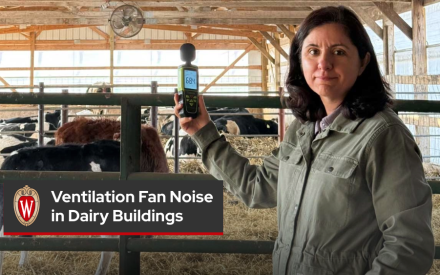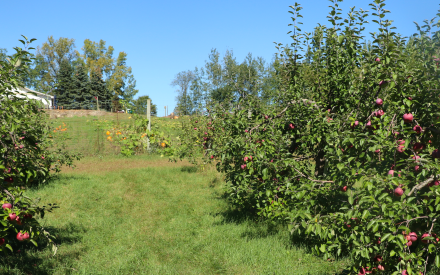A safety culture in agriculture saves lives, protects resources, improves efficiency, and ensures sustainable growth. Farm employers know that having a positive safety culture is good for their workers and for their business. But where do you start?
Explore this 5-part video series to gain a deeper understanding of safety culture, the two key components for building it, and the valuable benefits it offers
Video 1
What is a Safety Culture?
Think of safety as more than just a requirement—make it part of your farm’s identity. Whether you’re a dairy farmer or a farmworker, you’re in a competitive industry. A commitment to safety can set you apart, making your operation a place where people want to work and where productivity thrives.
Safety thinking is also a skill—one that’s valuable no matter where you work. If you’re a farmworker, especially if you’ve come from another country, developing a strong safety mindset is something that will serve you well in any workplace. It’s a skill that not only protects you but also makes you a more valuable worker.
Video 2
Tools to Build a Safety Culture
Safety culture begins with communication and trust. A safety policy and a job safety analysis are important tools to help you build and communicate your farm’s safety culture in your operation.
A safety policy is a tool which communicates and provides structure to your values and commitment to keep people safe. A job safety analysis involves breaking down everyday farm tasks into a series of individual steps. It helps your workforce in a structured way to identify, prioritize, and effectively deal with hazards and reduce risk.
Video 3
What is a Safety Policy?
A safety policy is the first tool that communicates and provides structure to your values and commitment to keep people safe. A written safety policy begins with a compelling mission statement that highlights your company’s commitment to safety. It outlines the actions that owners, supervisors, and employees will take to prioritize safety. This statement should also reflect your farm’s values and the ways in which it wants to connect to the surrounding community and the industry.
Your safety policy lays the foundation for a safety culture—setting expectations, rules and agreements that everyone on the farm follows. A thoughtful safety policy will list the consequences if the rules are not followed.
What makes your safety policy effective is that everyone who works and lives on the farm is involved. Everyone participates in creating, reviewing, and regularly updating it. Your policy is not just a document—it’s a living agreement that reflects the farm’s commitment to safety.
Video 4
Job Safety Analysis
A second important tool to help you develop a strong safety culture is the job safety analysis or JSA. The JSA will help your workforce in a structured way to identify, prioritize, and effectively deal with hazards and reduce risk. The JSA tool involves breaking down everyday farm tasks into a series of individual steps.
Once each step of a task is clearly identified, your workers are asked to brainstorm all of the potential hazards for that step, and decisions are made on how those hazards will be dealt with. Examples to reduce risk include re-configuring the task to improve safety, adding protective devices like shields, barriers, and other safeguards. Your methods to deal with hazards might also include adding warnings, increasing the frequency of training, or requiring PPE.
Developing JSAs isn’t just about improving safety—it’s a great way to engage your team. Bring people together, encourage discussion, and involve workers in creating a safer workplace. When people are part of the process, they take safety more seriously.
To help you visualize how this works in practice, here’s an example of a job safety analysis that demonstrates its value in identifying risks and improving workplace safety.
Video 5
Benefits of a Safety Culture
When employees feel safe at work and see that the company prioritizes safety, they feel valued, more engaged and motivated to perform the daily task without thinking about getting injured. When employees feel safe, they can focus on their work instead of worrying about potential hazards. This leads to higher efficiency and fewer disruptions.
Companies with strong safety records build trust among employees, customers, and stakeholders, which improves their public image and competitiveness. When employees see that leadership prioritizes safety, they feel valued and are more likely to engage in safety programs, report hazards, and contribute to a healthier work environment.
You can leverage your strong safety culture as a powerful hiring tool to attract top talent. Employees are drawn to organizations that prioritize safe and secure operations.

 There’s Opportunity in Those “Near Misses” on Your Farm
There’s Opportunity in Those “Near Misses” on Your Farm  Ventilation Fan Noise in Dairy Buildings
Ventilation Fan Noise in Dairy Buildings Making your events, festivals, and agritourism accessible to the public
Making your events, festivals, and agritourism accessible to the public Responding to accessibility issues and requests for accommodations for your agritourism event
Responding to accessibility issues and requests for accommodations for your agritourism event


